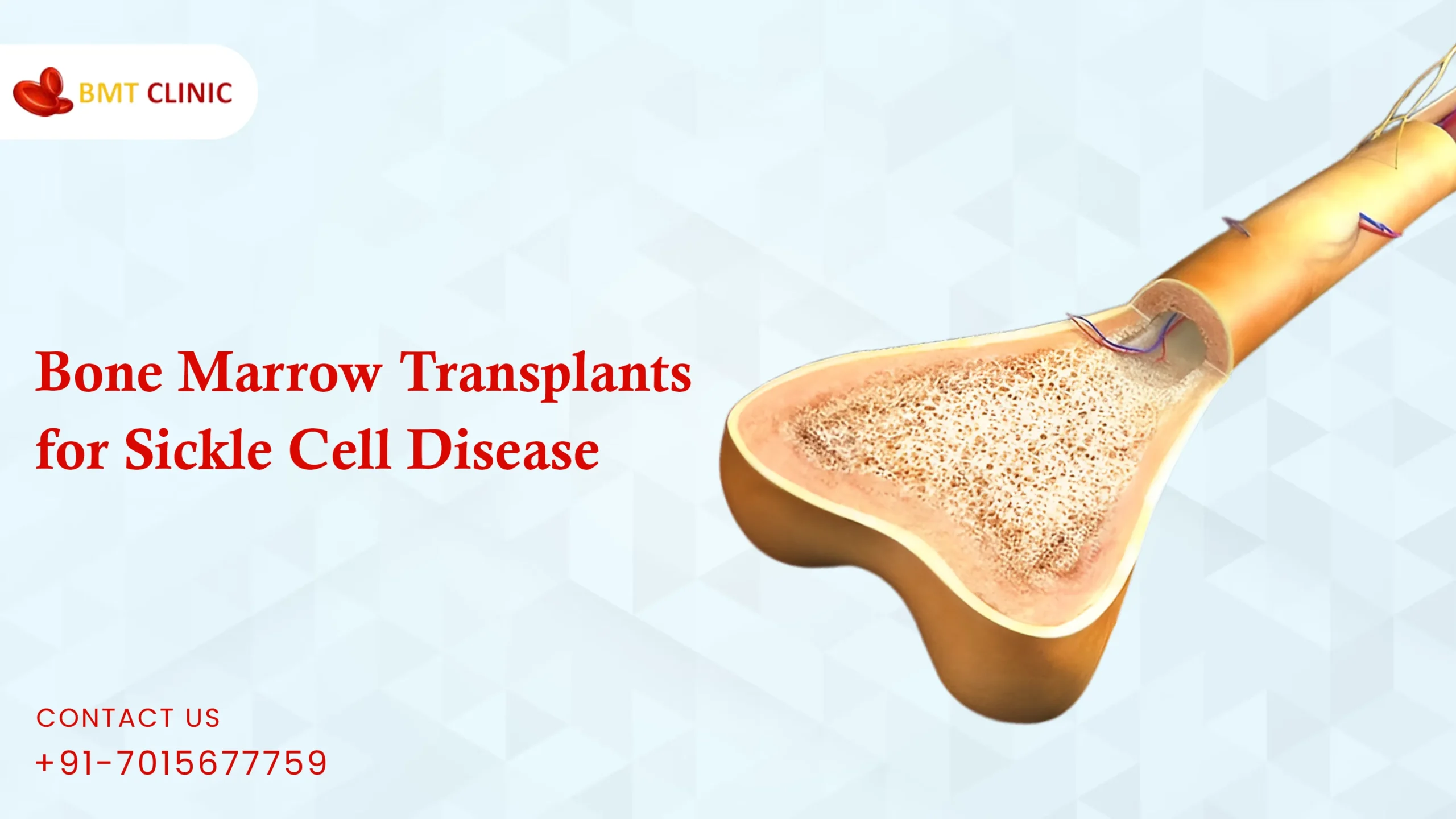Sickle cell disease (SCD) is a common genetic blood disorder that affects about 8 million patients worldwide. While it occurs globally, its prevalence is particularly high in African countries such as Nigeria, the Democratic Republic of Congo, and Tanzania.
Currently, bone marrow transplant is considered the only known cure for sickle cell disease. Although it’s complicated, it has proven to be highly effective and is strongly recommended for eligible patients.
About Sickle Cell Disease
Sickle Cell Disease (SCD), an inherited disorder, is caused by a genetic mutation in the hemoglobin. Hemoglobin is an iron-rich compound present in the red blood cells, which transfers oxygen to the rest of the body.
Usually, the red blood cell is round and flexible; however, in SCD, it changes into a c-shaped or sickle-shaped cell. Moreover, the cells become rigid and sticky, causing them to stick to blood vessel walls instead of flowing freely. Also, it becomes more prone to breaking apart easily than normal red blood cells.
This results in complications such as chronic anemia, episodes of severe pain (pain crises), increased risk of stroke, infections, organ damage, and delayed growth in children.
About Bone Marrow Transplant
A bone marrow transplant (BMT), also known as a Hematopoietic Stem Cell Transplant (HSCT), is a medical procedure used to replace damaged or diseased bone marrow with healthy stem cells. The success of a bone marrow transplant depends on several factors, including the patient’s overall condition, age, organ function, and the degree of donor-recipient tissue compatibility.
It is performed in two types,
- Autologous BMT: Uses the patient’s own stem cells; rarely used for SCD unless cells are genetically corrected.
- Allogeneic BMT: Uses stem cells from a matched donor; preferred and more effective for treating severe sickle cell disease.
However, autologous procedures are not commonly preferred unless the patient’s mutated stem cells are genetically corrected. Most BMTs use donor cells, where HLA matching is crucial—full matches share 8 out of 8 HLA markers.
Finding a Suitable Donor
A fully matched sibling is the ideal bone marrow donor. However, if one isn’t available, there are alternative options:
- Haploidentical Donor: A half-matched family member, such as a parent or sibling. This option has become increasingly viable due to advances in transplant procedures.
- Matched Unrelated Donor (MUD): Identified through national or international registries. In India, organizations like Datri help patients connect with unrelated donors.
- Cord Blood Units: Umbilical cord blood stored in public banks can be used, especially for younger children when no adult donor is available.
If no matched donor is found in your family, don’t worry—your transplant team will help identify the best alternative based on your medical needs and availability.
Bone Marrow Transplant in Sickle Cell Anemia: Who Is It For?
Bone marrow transplant (BMT) is the only curative option for sickle cell anemia, but it is typically reserved for patients with severe disease and life-threatening complications. Ideal candidates include:
- Children showing early signs of progressive organ damage (heart, kidney, or lung)
- Older adolescents or young adults who can weigh the risks and benefits and give informed consent
Common medical indications for BMT in sickle cell patients:
- Stroke or history of stroke
- Acute chest syndrome
- Frequent, severe pain crises
- Kidney dysfunction (sickle nephropathy)
- Vision loss from retinopathy
- Avascular necrosis (osteonecrosis) of multiple joints
- Recurrent priapism (painful, prolonged erections)
Bone Marrow Transplant: Step-by-Step
Before the transplant, patients undergo tests including blood work, kidney function, MRI/MRA, and echocardiogram. HLA typing is done to identify a suitable donor, and antibody screening helps minimize risks. Hydroxyurea is discontinued, exchange transfusions may be needed, and fertility preservation options are discussed before the procedure.
Procedure
Once a suitable donor is found and pre-transplant assessments are complete, the transplant process begins. It typically involves the following stages:
1. Conditioning Therapy
The patient receives chemotherapy (and sometimes radiation) to:
- Destroy diseased bone marrow
- Suppress the immune system
- Make space for the new stem cells to grow
This phase prepares the body to accept the donor cells and minimize the risk of rejection.
2. Stem Cell Infusion
After conditioning, the donor’s stem cells are infused intravenously, much like a blood transfusion. These cells then travel to the bone marrow, where they begin to produce new, healthy red blood cells.
3. Engraftment
The process of engraftment begins when the new stem cells start producing blood cells. This usually takes 2 to 4 weeks.
Also Read:- Bone Marrow Transplant Cost in India
Recovery
Recovery after a bone marrow transplant takes time and careful monitoring. It usually takes a few weeks for the new stem cells to start working, and patients may stay in the hospital during this period to prevent infections and manage side effects. Regular check-ups are needed to track progress, support immune recovery, and watch for any complications.
What are the Complications Related to Bone Marrow Transplant?
Despite its curative potential, HSCT carries significant risks, especially in patients without matched sibling donors:
Common Risks Include:
- Graft-versus-host disease (GVHD)
- Infections (due to weakened immunity)
- Graft failure (rejection)
- Infertility (especially after chemotherapy)
- Organ damage (lungs, liver, kidneys)
- Bleeding or anemia
- Risk of death (though low in matched sibling transplants)
With proper monitoring and experienced doctors, these risks can be minimized, making HSCT a viable and potentially curative option.
Bottom Line
Bone Marrow Transplant (BMT) is the only curative option for severe sickle cell anemia. While the procedure is complex and not widely available, India offers advanced treatment at a fraction of the cost compared to many Western countries. With proper information, guidance, and expert care, families can explore curative options and significantly improve long-term outcomes.

